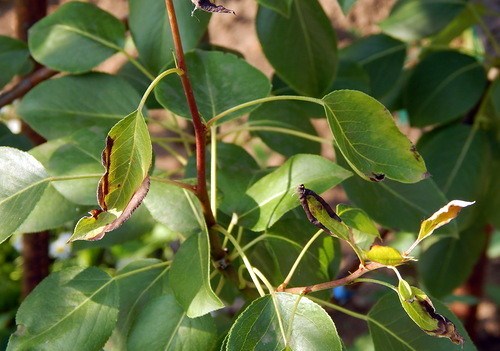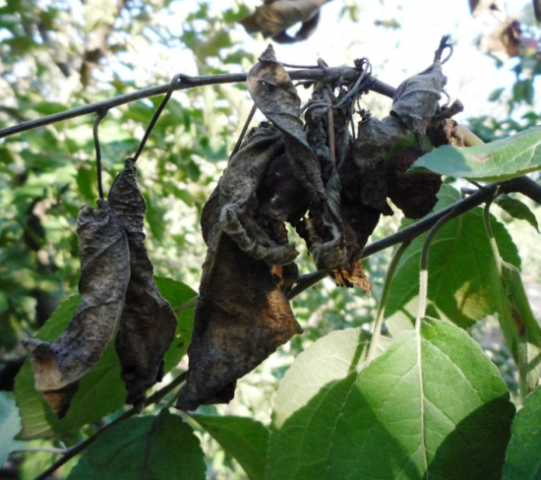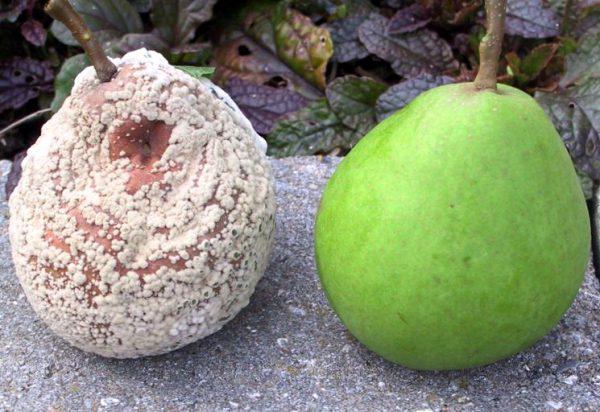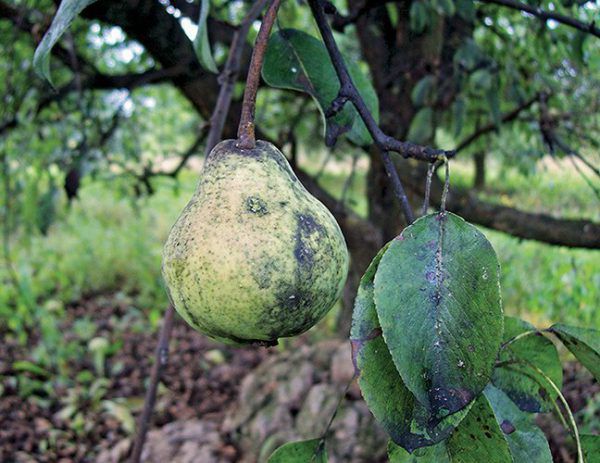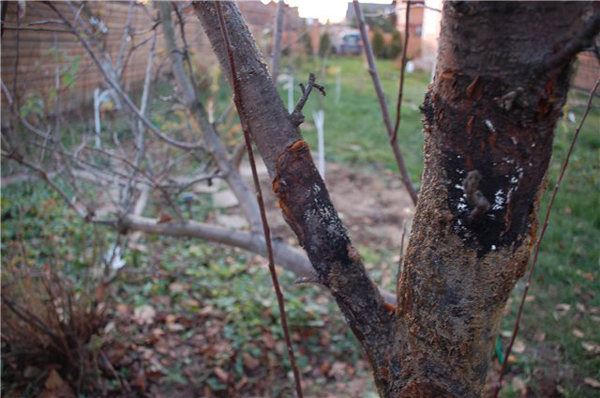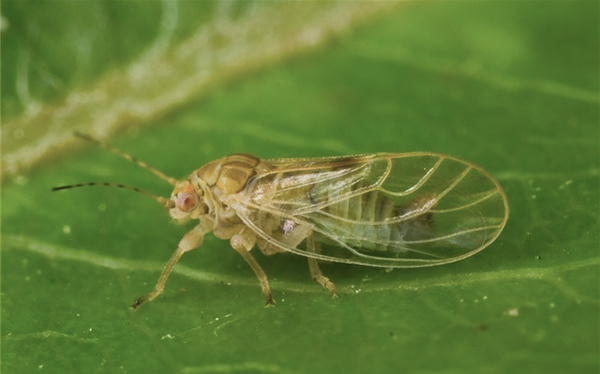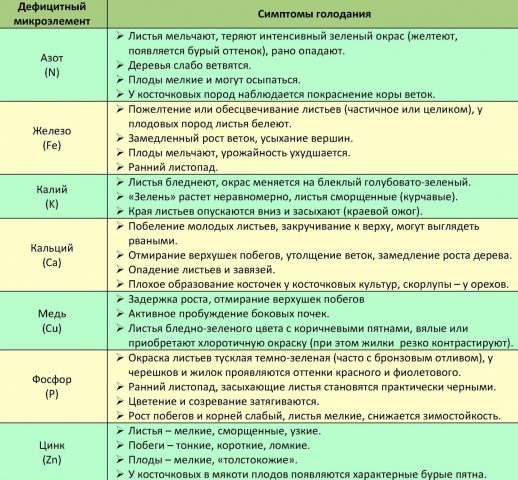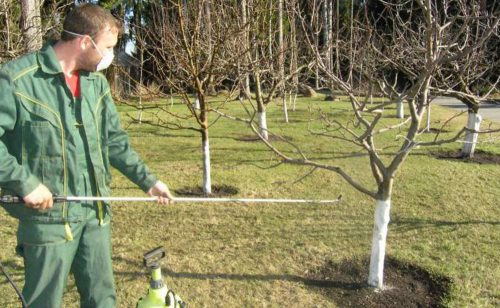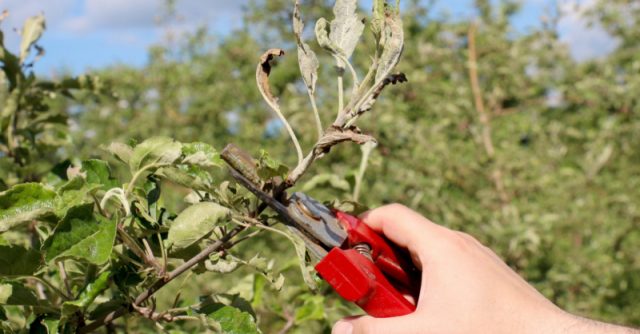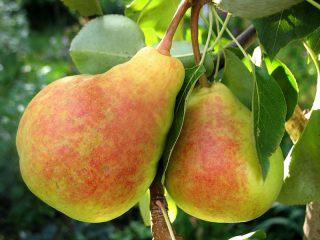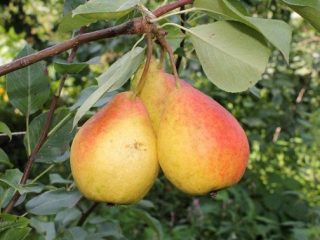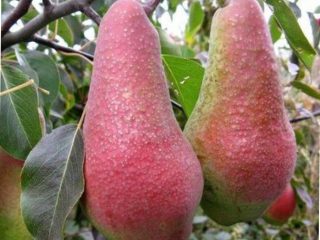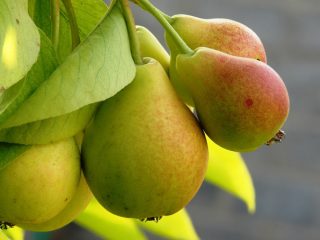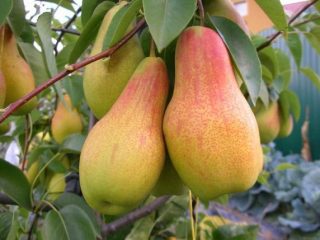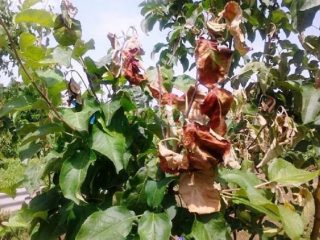Content
Many summer residents and gardeners, planting young pears on their plots, do not even suspect that before they can enjoy the juicy and honeyed taste of the fruit, they may have to face a lot of troubles. For example, the leaves on a pear turn black, because this can happen due to many different reasons, each of which requires an individual approach. And while some are easy to deal with, others can lead to the complete death of the affected tree.
Why do the leaves on the pear turn black?
In fact, the appearance of black spots and spots on pear leaves, fruits and even bark is a fairly common symptom. And it can be either evidence of an innocent lack of some nutrient element or a sign of a formidable disease that is practically incurable.
Diseases in which pear leaves, fruits and bark turn black
Blackening of pear leaves can occur due to diseases of both fungal and bacterial origin.
Bacterial burn
If not only the leaves, but also the entire top of the pear have turned black, and the leaf blades, along with the change in color, also curl, then all the signs of a serious bacterial disease are evident.
Bacterial burn, which is what this insidious disease is called, is especially active in hot weather with high humidity and when it rains constantly. The very first to turn black are the peduncles and ovaries of the pear. At this stage, you can try spraying with biological antibiotics: Gamair, Fitolavin.
The youngest leaves are the next to suffer; they become covered with brownish-dark spots along the edges. Soon the spots turn black and spread over the entire leaf surface, and the leaves themselves curl into tubes. Then the tips of the young shoots of the pear turn black. In a fairly short period, all young branches can be infested with the ubiquitous bacteria and look as if they have been burned by fire. That's why this disease is called a burn.
The most susceptible to this insidious disease are young pear trees between 2 and 10 years old. Apparently, this comes from the greater activity of various physiological processes in young trees against the background of an insufficiently developed immune system. Pears most often suffer from this disease in the southern regions. This may occur either due to the lack of resistance of southern pears to bacteria, or due to the specifics of the hot climate, in which the disease spreads too quickly.
The bacteria can be carried by wind, insects and even birds.Infection also often occurs when using unsterile tools when pruning branches.
Scab
Because of this most common fungal disease, not only the leaves turn black, but also the shoots, flowers, and fruits of both pear and apple trees. The disease develops intensively with the simultaneous development of factors such as high humidity and heat. If it is not stopped in time, but allowed to progress, then over time all the pear and apple trees in the garden may die, especially where they grow with a thickened crown.
The first manifestations of the disease can be seen on pear leaves shortly after they bloom. Small spots of a brownish-yellow hue form, over time they grow and darken, then turn black. Pear leaves are almost entirely covered with black spots. The causative agent of the disease, the Dothideales fungus, usually overwinters in fallen leaves. Barely noticeable dark tubercles appear on them, in which spores ripen. With the appearance of buds and flowers on pear trees, scab spores are released and actively spread over the surface of the leaves.
Those pear fruits that manage to form are distinguished by hard, corky pulp, a large number of dark spots on the skin and low taste. There are pear varieties that are relatively resistant to this disease. Among them are Gurzufskaya, Dessertnaya, Clapp's favorite, Strawberry, Victoria, Exhibition, Smuglyanka.
Fruit rot
The scientific name of this fungal disease is moniliosis, and it primarily affects and turns black the fruits.The first signs appear during the period of pear fruit filling and are small dark brown spots. Then they begin to spread throughout the fruit, and the pear becomes loose and tasteless. With the intensive development of the disease, not only the fruits are affected, but also the branches, which gradually begin to dry out.
Sooty fungus
This fungal disease can affect pears either during flowering or during fruit ripening. The following factors contribute to the spread of the disease:
- lack of light;
- thickened crown into which air and light do not pass well;
- planting a tree in a lowland with stagnant water;
- work of insect pests.
As a result, a dark coating appears on the leaves and fruits, and the taste of the pears decreases. Interestingly, these black spots are quite easily removed from the affected parts of the leaf. Based on this feature, sooty fungus is easily diagnosed and is difficult to confuse with any other disease.
Most often, fungus appears on pears as a result of feeding on sucking insect pests. As a result of their activity, they secrete a sugary liquid, which becomes the basis for the development of sooty fungus.
Black pear cancer
This disease of fungal origin is also sometimes called cytosporosis. As a result of its influence, first of all, the pear bark and branches turn black. True, with severe damage, both leaves and even fruits begin to suffer, becoming covered with reddish spots. On the trunk, small black spots oozing gum first form. Soon, extensive wounds of a brownish tint appear in place of the spots, and soon the entire trunk of the pear may turn black. It is believed that the disease cannot be cured, and a severely affected tree must be destroyed.But gardeners have invented many methods that, if not guarantee a cure, then can stop the course of the disease.
Pests
Among the main pests of pears, whose activity leads to the fact that pear leaves turn black, can be called copperhead, aphids and leaf rollers.
The copperhead is a small winged insect that can jump and fly from tree to tree. Pests suck the juice from the shoots and leaves, as a result of which flowers and ovaries fall off and the size of the leaves decreases. During its life, the leaves become covered with sticky, sweetish dew, which serves as an excellent breeding ground for sooty fungus. As a result, the leaves on pear seedlings turn black and fall off.
Aphids that have multiplied in large numbers pose no less a danger to the leaves of pear trees. Just as in the case of a leaf roller attack, the leaves begin to curl, turn black and gradually fall off.
Improper care
A lack of certain macro- and microelements in the pear tree's nutrition can also cause blackening of certain areas of the leaves.
Most often, in acidic soils, a lack of calcium can be observed, which is expressed in the appearance of dark yellow areas on the leaves. Over time, they turn black and dry, and the tree looks weakened.
Pear leaves also turn black if there is a lack of boron, but in this case they also curl, and the tips of the shoots become deformed and also begin to dry out.
The leaves on the pear also turn black due to a lack of humidity in the air when a large number of dust particles accumulate in it.
What to do if the leaves on the pear turn black
The easiest way to deal with the problem is if black spots on pear leaves appear due to a lack of certain nutrients.
For example, calcium nitrate or other complex calcium-containing fertilizer can easily prevent calcium deficiency.
And in order to increase air humidity, it is enough just to regularly spray the trees with ordinary water until the problem ceases to be relevant.
The most difficult thing to deal with is a bacterial burn. In general, no official effective treatment for bacterial burns has yet been invented. But you can try to save the tree using conventional antibiotics.
First, using pruning shears and a container of medical alcohol, you need to trim every branch on which even the slightest damage is found. After each pruning, the pruning shears must be disinfected in an alcohol solution. All cut pear branches are placed in a metal basin and burned as soon as possible. All sections are also disinfected by wiping them with a rag soaked in alcohol.
Then you need to find one of the following antibiotics:
- Ofloxacin;
- Penicillin;
- Agrimycin;
- Thiomycin.
The drug is diluted in a small amount of boiled water and thoroughly sprayed on every twig and every leaf on all sides. The first treatment is carried out in the budding phase - the beginning of flowering of the pear. Then the operation is repeated at least three times, every five days.
If the procedures done do not help, you will have to part with the pear by cutting it down at the root. The root must also be burned, and the place where the tree grew should be treated with strong bactericidal preparations.
It can also be difficult to cope with a situation when the trunk of a young pear tree has turned black.It is necessary to realize that black cancer most often occurs as a consequence of frost damage received after winter, when an infection gets into the weakened wood. But if the disease was caught in the initial stage, then you can try to cope with it.
Treatment of black cancer on a pear must begin with careful cutting and even scraping of all affected parts of the wood down to healthy tissue. All wounds must be treated with a solution of copper sulfate and covered with oil paint.
The following components can also be effective for washing the remaining parts of the tree:
- pharmaceutical greens;
- copper-containing preparations;
- solution of clay and mullein in equal parts;
- strong solution of potassium permanganate;
- a saturated solution of table salt with a few drops of iodine;
- diluted alcohol or vodka;
- "Vitaros";
- "Cresoxim-methyl."
Agrotechnical measures
To cope with the many reasons that cause the appearance of black leaves on a pear, sometimes it is enough to carry out a set of agronomic and mechanical measures in a timely manner. These include the following:
- In early spring, immediately after the snow melts, the ground under the pear tree is cleared of all plant debris.
- Then they dig up the soil in a circle encircling the crown of the tree, while simultaneously introducing organic or mineral fertilizers into it.
- Before the buds open, treat the pear with hot water at a temperature of + 60 °C.
- During the period when buds appear, they are sprayed with the Agat biofungicide.
- After the pear blossoms, potassium-phosphorus fertilizer is applied.
- After 18-20 days, repeat treatment with the biofungicide.
- In mid-summer, feed the pear for the last time, using ash and humus.
- In the autumn, to prepare for winter, they do sanitary pruning of the tree, remove and burn all plant debris.
- The kidneys are treated with a 5% urea solution. And to disinfect the soil around the tree, use a solution with a 7% concentration.
- The trunk and main skeletal branches are coated with a solution of lime with the addition of copper sulfate.
Biological agents
Recently, quite effective biological agents have appeared, consisting of beneficial bacteria, which can quite successfully fight some diseases. Even with a bacterial burn on pears in the early stages of the disease, you can try to cope with the help of biological products.
For this you can use Fitolavin and Gamair. The first drug has a really strong effect and can be used at the beginning of the growing season, before the fruits ripen. 20 ml of Fitolavin are diluted in 10 liters of water and the resulting solution is watered and sprayed on the tree.
It is advisable to use Gamair during the period of fruit ripening, since it is completely safe for human health. 2 Gamaira tablets are diluted in 1 liter of water and sprayed on pear branches.
Biological products will also be effective against sooty fungus. After all, the microorganisms used in them eat sugar from insect secretions, thereby leaving the fungus without food. You can use Siyanie, VostokEM1 and Baikal.
Chemicals
All fungal diseases, as a result of which the leaves and branches of the pear turn black, must be treated at the first signs detected with copper-containing preparations: Bordeaux mixture, copper sulfate and others. Spraying with these products is especially effective in the spring and autumn.After bud break, it is better to use fungicides - Fitosporin, Folicur, Topsin.
You can also use solutions prepared according to the following recipes:
- 300 g of copper sulfate + 350 g of lime + 10 liters of water (before buds open);
- 100 g of copper sulfate + 100 g of lime + 10 l of water (after bud break);
- 30 g of azophos + 2 ml of SCOR (fungicide) + 6 g of Bayleton + 40 g of copper chloride + 10 l of water.
And against insect pests it is necessary to use insecticides such as Fitoverm, Alatar, Biotlin and Fufanon. All damaged leaves and fruits must be removed from the pear and burned.
Traditional methods
As for insect pests, the easiest method of getting rid of them is to wash them off the trees using good water pressure.
For spraying, you can also use a solution of regular dishwashing detergent in water. The procedure is repeated every other day for two weeks.
You can also dilute 400 ml of 70% alcohol and 1 tbsp in 1 liter of water. l. liquid soap and spray the trees in the morning before the sun rises.
Infusions of all kinds of herbs are also good against insects: garlic, tansy, onion peel, yarrow and tobacco. To obtain an infusion, 400 g of any herb is poured into 3 liters of water and infused for about 3-4 days. Add a few handfuls of wood ash. Filter, bring to a volume of 10 liters and spray the trees.
Preventive measures
Timely implementation of all agrotechnical measures will serve as an excellent prevention of many pear diseases and will help prevent blackening of the leaves.
Therefore, in addition to the above measures, one should not forget:
- regularly prune trees, especially sanitary ones;
- after pruning, do not forget to disinfect the tools;
- ensure the correct watering regime;
- provide all necessary nutrients;
- do not allow the root collar of the tree to become waterlogged;
- provide reliable protection from frost in winter.
In addition, it is important to choose healthy and high-quality planting material.
Conclusion
If the leaves on a pear turn black, this can be a sign of both the most dangerous and completely harmless diseases. But in both cases, it is necessary, first of all, to make a correct diagnosis. After all, the success of solving the problem will depend on this. And the abundance of modern agricultural techniques, as well as chemical and biological means of protection, will help to cope with any problem.
